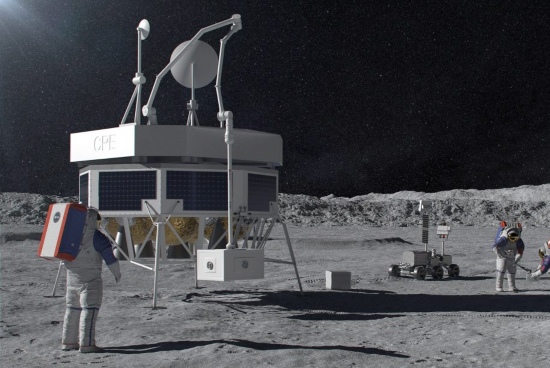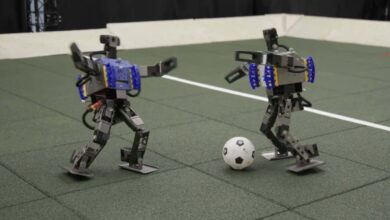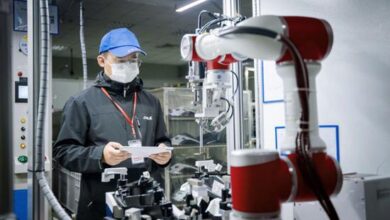Argonaut lunar lander robotic arm prototype handed to Redwire

The goal for the lander is to establish the capability, for Europe, to land 1,500-1,800 kg of cargo, infrastructure, and scientific instruments on the lunar surface.
Argonaut
The robotic system is known as MANUS – the Manipulator for Argonaut Payload Needs and Unloading Support. It will be developed in Luxembourg by the space infrastructure company, where it is also currently developing its STAARK robotic arm, a modular and customisable robotic system designed for various on-orbit applications.
MANUS will support logistics operations such as offloading, positioning and retrieval of objects, and positioning of the lander. Redwire will develop, breadboard, test and verify the functions of the MANUS with the opportunity to compete for a follow-on contract.
“We are very excited to be working with Redwire’s Luxembourg team on the development of a first scaled breadboard for a robotic arm for the Argonaut lander,” said Dr. Gunter Just, ESA Robotics Engineer.
“With challenging reference scenarios for three potential Argonaut missions to address and challenging user requirements to meet, it will be an interesting 18 months until the close-out of this activity.”
The financial terms of the contract haven’t been revealed.
The Argonaut spacecraft has three main components: the lunar descent element that takes care of flying to the Moon and landing on target, the cargo platform element that is the interface between the lander and its payload, and finally, the element that mission designers want to send to the Moon.
It will launch on an Ariane 6 rocket in a direct flight to the Moon.
You can read more about the Argonaut mission on the ESA website.
Space robotics
“Redwire is proud to be leveraging its significant heritage in space robotics technology for ESA’s Argonaut mission, ensuring that it meets the highest standards of performance, reliability, and safety,” said Jaroslaw Jaworski Managing Director of Redwire Space’s Luxembourg Facility.”
“As a leader in robotic arm development and with a proven track record of delivering innovative solutions for ambitious space exploration missions, Redwire’s robotic capabilities are poised to play a crucial role in future European space missions, contributing to lunar exploration and paving the way for advancements in space exploration technology.”
Lunar infrastructure
Redwire highlights that it has a portfolio of lunar infrastructure projects. Last year, for example, it was awarded a DARPA study contract to investigate future commercial lunar infrastructure.
The company is also prototyping technology meant to build critical infrastructure such as roads and landing pads on the lunar surface through a $12.9 million Tipping Point contract with NASA.
Redwire will also be providing Roll-Out Solar Array (ROSA) technology for Astrobotic’s Lunar Vertical Solar Array Technology (LVSAT) programme to deliver power on the lunar surface. LVSAT is intended to provide power for missions on the Moon starting with NASA’s Artemis programme.
Luxembourg
Why Luxembourg? The Grand Duchy has an expanding space sector with more than 50 companies and two public research organisations, and the Luxembourg Space Agency.
For example, as well as Redwire, ClearSpace has established an operational presence there.
The Luxembourg Space Agency welcomed the latest announcement:
“Technology developments are essential in building capacity to go further in the direction of a sustainable utilization of space resources,” said says Mathias Link, deputy CEO of the agency.
“The lunar robotic arm project that Redwire will be working on, here in Luxembourg, for ESA’s moon lander is not only a testimony of Luxembourg’s successful strategy in developing a thriving space ecosystem, but will also contribute to further position the country as a European hub for commercial space and for space resources in particular. We are looking forward to it!”
See also: Redwire Phantom VLEO spacecraft bridges gap between air and space



